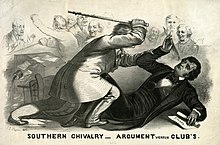| Millennium: | 2nd millennium |
|---|---|
| Centuries: | |
| Decades: | |
| Years: |
| 1856 by topic |
|---|
| Humanities |
| By country |
| Other topics |
| Lists of leaders |
| Birth and death categories |
| Establishments and disestablishments categories |
| Works category |
| Gregorian calendar | 1856 MDCCCLVI |
| Ab urbe condita | 2609 |
| Armenian calendar | 1305 ԹՎ ՌՅԵ |
| Assyrian calendar | 6606 |
| Baháʼí calendar | 12–13 |
| Balinese saka calendar | 1777–1778 |
| Bengali calendar | 1263 |
| Berber calendar | 2806 |
| British Regnal year | 19 Vict. 1 – 20 Vict. 1 |
| Buddhist calendar | 2400 |
| Burmese calendar | 1218 |
| Byzantine calendar | 7364–7365 |
| Chinese calendar | 乙卯年 (Wood Rabbit) 4553 or 4346 — to — 丙辰年 (Fire Dragon) 4554 or 4347 |
| Coptic calendar | 1572–1573 |
| Discordian calendar | 3022 |
| Ethiopian calendar | 1848–1849 |
| Hebrew calendar | 5616–5617 |
| Hindu calendars | |
| - Vikram Samvat | 1912–1913 |
| - Shaka Samvat | 1777–1778 |
| - Kali Yuga | 4956–4957 |
| Holocene calendar | 11856 |
| Igbo calendar | 856–857 |
| Iranian calendar | 1234–1235 |
| Islamic calendar | 1272–1273 |
| Japanese calendar | Ansei 3 (安政3年) |
| Javanese calendar | 1784–1785 |
| Julian calendar | Gregorian minus 12 days |
| Korean calendar | 4189 |
| Minguo calendar | 56 before ROC 民前56年 |
| Nanakshahi calendar | 388 |
| Thai solar calendar | 2398–2399 |
| Tibetan calendar | 阴木兔年 (female Wood-Rabbit) 1982 or 1601 or 829 — to — 阳火龙年 (male Fire-Dragon) 1983 or 1602 or 830 |
Wikimedia Commons has media related to 1856.


1856 (MDCCCLVI) was a leap year starting on Tuesday of the Gregorian calendar and a leap year starting on Sunday of the Julian calendar, the 1856th year of the Common Era (CE) and Anno Domini (AD) designations, the 856th year of the 2nd millennium, the 56th year of the 19th century, and the 7th year of the 1850s decade. As of the start of 1856, the Gregorian calendar was 12 days ahead of the Julian calendar, which remained in localized use until 1923.